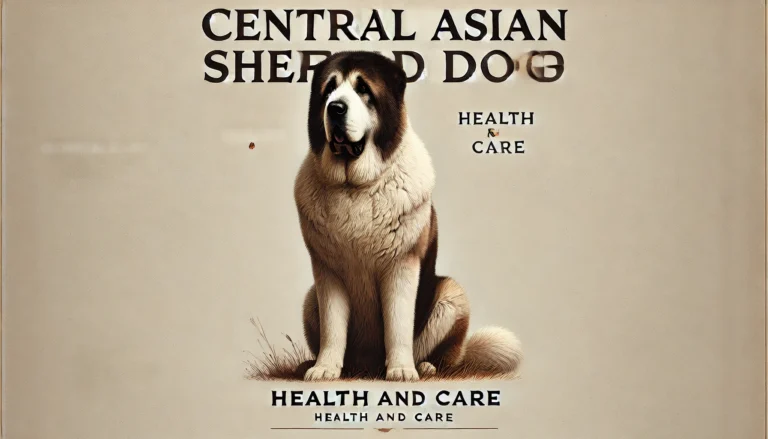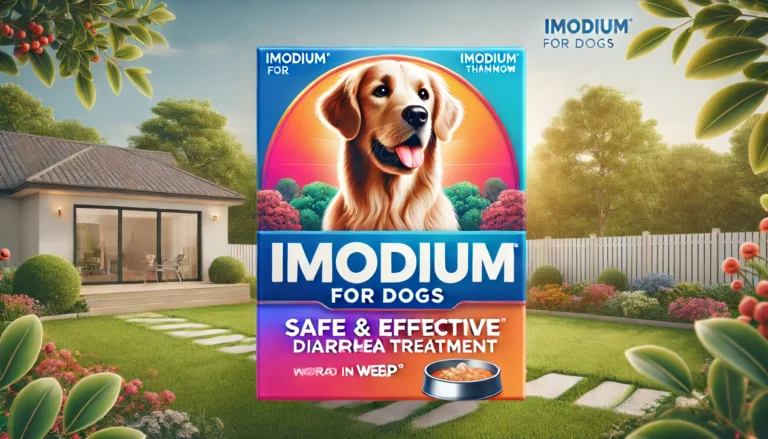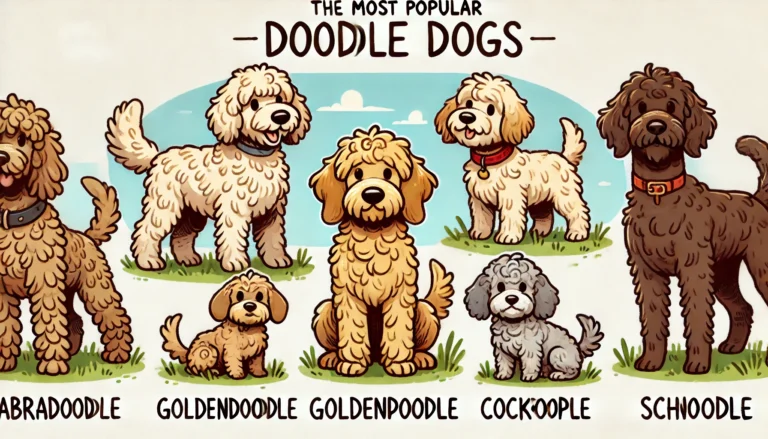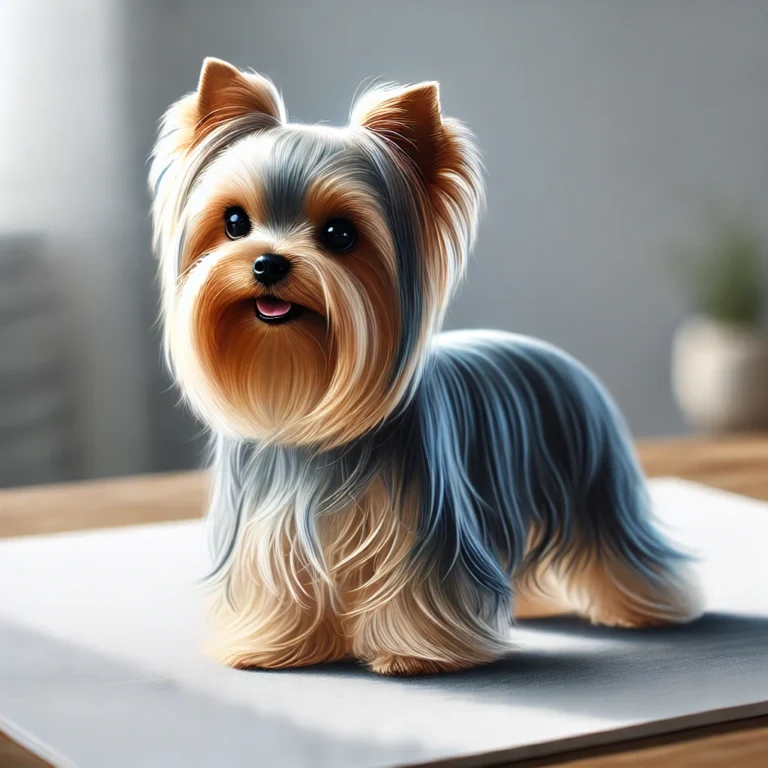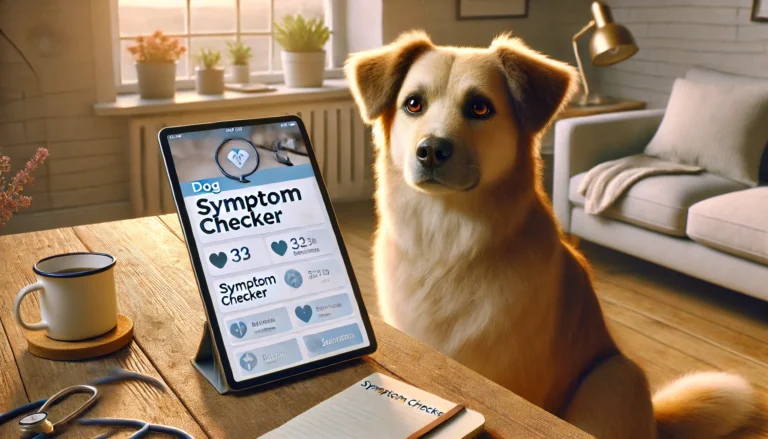Dogs in Heat: When It Happens, How Long It Lasts, and What To Do


Stages of the Dogs in Heat Cycle
| Stage | Duration | Description |
| Proestrus | 7-10 days | Begins with the swelling of the vulva and vaginal bleeding. The dog is not yet receptive to males. |
| Estrus | 5-9 days | The female dog is receptive to males and can conceive during this time. |
| Diestrus | 10-140 days | The dog is no longer receptive to males. This phase lasts until the next cycle begins. |
| Anestrus | 4-5 months | A period of inactivity between cycles. |
how long
are dogs in heat
Female dogs, known for their distinct reproductive stages, experience what is commonly referred to as being “in heat.” This period, essential for dog breeders and pet owners to manage, encompasses several phases, each with unique signs and behaviors.
Key Aspects of the Heat Cycle
Duration and Frequency
- How Long Are Dogs in Heat? Typically, the heat lasts about 2 to 4 weeks.
- How Often Do Dogs Go in Heat? Most dogs go into heat twice a year, although it varies by breed and individual health.
Recognizing When Your Dogs in Heat
- Common Behaviors: A female dog in heat might appear more affectionate, urinate more frequently, and show nervousness or alertness.
- Physical Signs: Swollen vulva, noticeable discharge, and tail flagging are prominent indicators.
Common Behaviors of a Female Dog in Heat
| Behavior | Description |
| Increased Urination | Marks more frequently to attract males with pheromones. |
| Restlessness | Shows nervous or agitated behavior. |
| Affectionate | May become unusually affectionate to other dogs or humans. |
Managing a Dogs in Heat
- Containment: To avoid unwanted pregnancies, keep your dog secured and away from male dogs.
- Comfort: Provide a quiet, comfortable space as she may exhibit sensitive behavior.
- Cleanliness: Regularly clean areas where the dog spends time to manage discharge effectively.
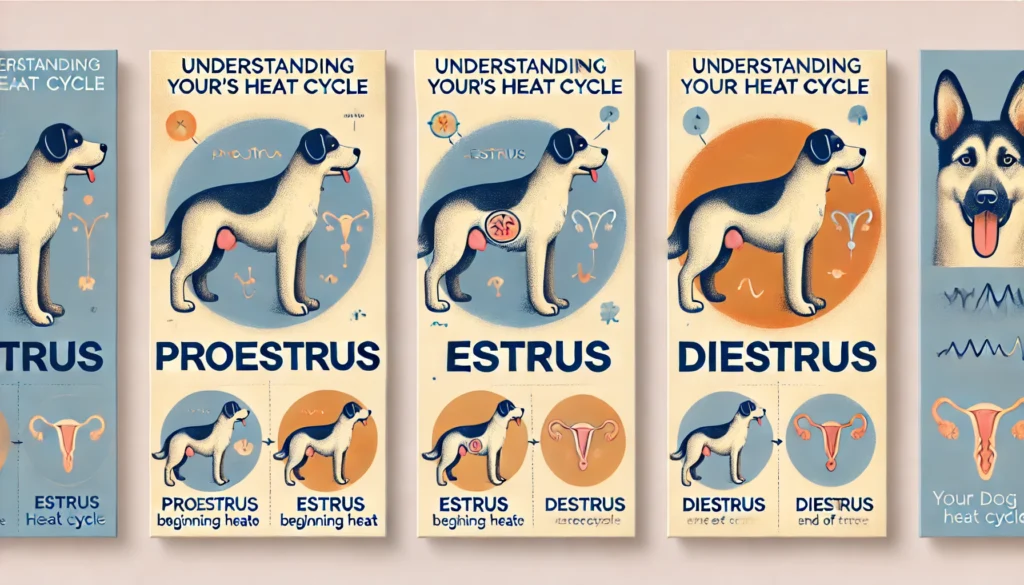
Health and Longevity Concerns
- Menstrual and Heat Cycles: Unlike humans, dogs do not have a menstrual cycle but an estrous cycle with no menopause phase.
- Lifespan of Heat Cycles: Dogs do not stop going into heat, although the frequency may decrease with age.
Spaying: A Preventative Health Measure
Spaying your dog not only prevents unwanted pregnancies but also reduces the risk of certain health issues, such as ovarian cancers and complicated pregnancies. It also eliminates the heat cycle altogether, aiding in better pet and household management.
Visual Aids
- Images of Signs: Photos showing physical signs like swollen vulva or changes in behavior.
- Infographic on Managing a Dogs in Heat: A step-by-step guide on how to provide comfort and safety during the heat period.
- Diagram of Canine Reproductive Cycle: A detailed diagram explaining the different phases of the heat cycle.
Understanding and Preparation is Key
Knowing the signs and duration of the heat cycle in dogs, such as how long a dog’s heat cycle lasts or what to do when your dog is in heat, equips owners to handle this natural aspect of a dog’s life responsibly. Preparing for your dog’s first heat, understanding the cycle’s impact over time, and recognizing the need for professional veterinary advice are crucial steps in responsible pet ownership.
For anyone managing a female dog, recognizing the signs of heat and providing appropriate care are vital. Whether it’s your dog’s first heat or managing her cycle as she ages, staying informed helps ensure her well-being and your peace of mind.

